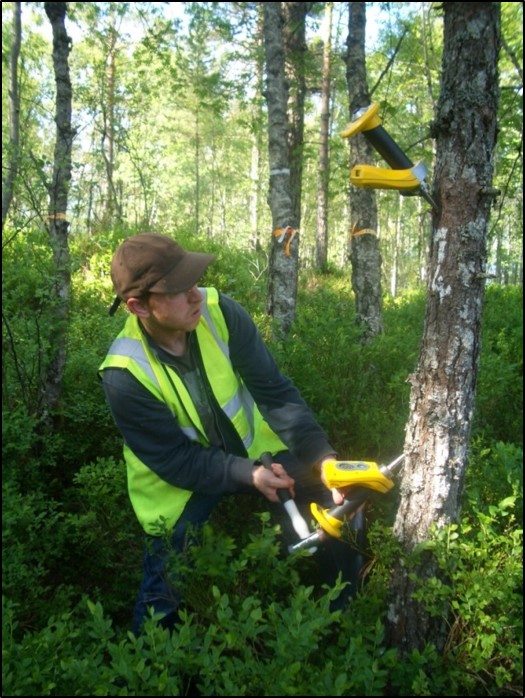One Northern Arizona University researcher took the road less traveled to academia, going from a music business executive to wood scientist, discovering that he could apply acoustics to his work in a whole new way.
School of Forestry assistant professor David Auty is NAU’s premier wood scientist. His research helps determine the suitability of wood for a specific end use, which can inform investment decisions by the forest products industry. He assesses wood quality using a variety of innovative methods, including non-destructive acoustic evaluation tools and computer modeling.
In Arizona, his research is of particular importance while the region’s forest products industry slowly reemerges after decades of stagnation tied to environmental lawsuits and public land management concerns.
Auty was born and raised in Yorkshire, England. Before he was a scientist, he worked as a label manager for record companies such as Warner, Universal and BBC Music, promoting established and emerging bands and artists. He opted for the music industry after graduating from college, but years of fierce competition and grueling hours left him questioning what he wanted to do with his life.
“A lot of people think the music industry is glamorous and it’s not,” Auty said. “It’s such hard work and long hours. It can be fun, but it’s brutally competitive. I wanted to go back to school. I was an inquiring mind and science was where I wanted to go.”
Auty enrolled at University of Edinburgh in Scotland, where there was an established forestry program. A turning point was observing a researcher testing the wood quality of standing trees using acoustic evaluation tools. These send sounds waves between two probes inserted in a tree to learn more about the wood’s quality, or stiffness, based on the velocity of the waves.
“You can take an average stiffness of a stand (of trees) and then decide what to do with that wood based on proximity to certain mills,” Auty said. “It’s a way of making decisions about allocation much earlier in the supply chain.”
Auty received his doctorate from the University of Aberdeen and then worked in Quebec, Canada, where he identified wood quality and supply issues in eastern boreal forests through statistical modeling of wood properties.
Auty joined NAU’s School of Forestry in 2014. The school was looking for a wood science utilization and technology specialist whose research could help inform the region’s wood products industry. There had been a seismic shift in forest management practices over the past decade and land managers were now taking a restoration-based approach to thinning trees and reducing the risk of severe wildfire.
Large-scale restoration projects like the 2.4-million-acre Four Forest Restoration Initiative were ramping up, and the forest products industry was working out how to process the material coming out of the forests. The School of Forestry knew Auty’s work would be valuable for sawmills and processing plants coming back online.
“There is no strong lumber industry in this region, but I don’t believe that’s a reason not to assess the resource,” Auty said. “When industry comes, we need to give them the best chance possible to understand the fiber supply, and to do that we have to measure it and model it.”
Applying his research in northern Arizona’s pine forests, Auty uses non-destructive evaluation methods by linking acoustic data from live, standing trees with actual internal wood properties. This method doesn’t remove trees from the forest and, as more information is collected, allows for a rapid assessment of the resource.
As the region’s wood products industry takes root and grows, demand for his data will likely increase.
“Industry capacity is limited here, so there isn’t that driver to get that information,” Auty said. “Small ponderosa pine, let’s not kid ourselves, has limited low value markets. We need to find innovative ways to add value to that.”
As for the music industry, Auty said he does not miss it. He can enjoy music without it feeling like work. Instead of crunching album sales data, now he models wood properties to assess the end-use potential of ponderosa pine.
“My first career certainly prepared me for this. It’s taken quite a while to realize I was lucky to have that. You are who you are because of all the things you’ve done before.”



